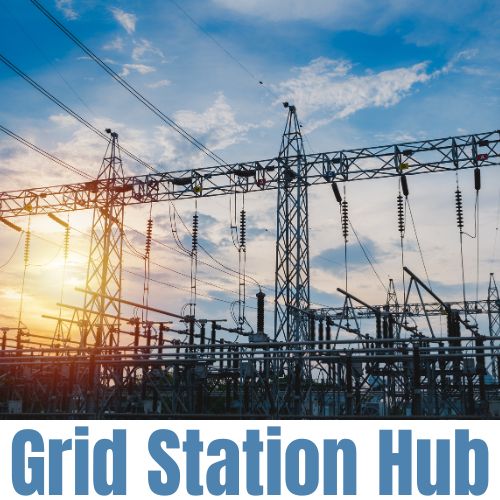Grid station circuit breaker plays a crucial role in maintaining the stability and reliability of the electrical grid. However, like any other electrical component, circuit breakers can experience faults or failures. When a circuit breaker malfunctions, it is essential to address the issue promptly to prevent power outages and potential damage. In this comprehensive guide, we will walk you through the process of repairing a grid station circuit breaker, providing step-by-step instructions and essential tips. So, let's dive into the world of circuit breaker repair and learn how to restore functionality to these vital electrical devices.
Understanding the Grid Station Circuit Breaker Repair
Before diving into the repair process, it is crucial to familiarize ourselves with the grid station circuit breaker's components and its role in the electrical grid. This section will provide an overview of circuit breakers, their types, and their importance in safeguarding the grid from overloads and short circuits. By understanding the inner workings of a circuit breaker, you will be better equipped to diagnose and repair any faults that may arise.
Identifying Circuit Breaker Repair Issues
To repair a grid station circuit breaker effectively, you must first identify the underlying problem. This section will guide you through the process of troubleshooting circuit breakers, covering common issues such as tripping, poor contacts, and mechanical failures. By learning to recognize these problems, you can pinpoint the cause and determine the appropriate repair strategy.
Precautions and Safety Measures
Working with electricity requires utmost caution. This section will highlight the safety measures and precautions that must be taken before attempting any repairs on a grid station circuit breaker. From wearing personal protective equipment (PPE) to understanding electrical hazards, following these guidelines will ensure your safety throughout the repair process.
Read More: Basic Knowledge of Electrical Transformer
Step-by-Step Circuit Breaker Repair
This section will provide a comprehensive, step-by-step guide to repairing a grid station circuit breaker. It will cover each stage of the repair process, including isolating the circuit breaker, disassembling it, inspecting and cleaning components, replacing faulty parts, reassembling the circuit breaker, and conducting tests to ensure proper functioning. Detailed instructions, accompanied by clear diagrams or images, will assist you in successfully completing each repair step.
Additional Tips and Maintenance
To ensure the longevity and optimal performance of the grid station circuit breaker, regular maintenance is crucial. This section will provide valuable tips on maintaining circuit breakers, such as periodic inspections, cleaning procedures, and preventive measures. Additionally, it will outline the importance of professional assistance in complex repairs or situations where advanced knowledge is required.
Conclusion
Repairing a grid station circuit breaker is a task that requires careful attention, knowledge, and adherence to safety guidelines. By understanding the circuit breaker's components, identifying common issues, following the appropriate repair steps, and conducting regular maintenance, you can effectively restore functionality to these critical electrical devices. Remember, when in doubt or facing complex issues, it is always advisable to seek professional assistance to ensure the safety and reliability of the electrical grid.
FAQ
Q1- Which circuit breaker is used in grid station?
The circuit breaker commonly used in grid stations is the High Voltage (HV) SF6 Circuit Breaker.
Q2- How many types of circuit breakers are there in the substation?
There are several types of circuit breakers commonly used in substations. The main types include:
- Air Circuit Breaker (ACB): Uses compressed air to extinguish the arc when a fault occurs.
- Oil Circuit Breaker (OCB): Utilizes oil as the arc quenching medium.
- Vacuum Circuit Breaker (VCB): Relies on vacuum interrupters to extinguish the arc.
- SF-6 C.B: Uses sulfur hexafluoride gas as the arc quenching medium.
- Gas Insulated Switchgear (GIS): Incorporates a combination of circuit breakers, disconnectors, and other components in a compact, gas-insulated unit.
- Hybrid Circuit Breaker: Combines the features of different types of circuit breakers, such as vacuum and SF6, to optimize performance and reliability.
It's worth noting that the specific type of circuit breaker used in a substation depends on factors such as voltage level, load requirements, environmental conditions, and regulatory standards. Different types of circuit breakers offer various advantages and are chosen based on the specific application and operational needs of the substation.
The circuit breaker commonly used in solar systems is the Photovoltaic (PV) Circuit Breaker. PV circuit breakers are specifically designed to protect solar panels and associated equipment from overcurrent and short-circuit faults. These circuit breakers are installed on the DC side of the solar system, typically between the solar panels and the inverter.
PV circuit breakers come in various sizes and ratings to match the specific requirements of the solar installation. They are designed to handle the DC current produced by the solar panels and provide protection against excessive current flow, which could potentially damage the panels or other components of the solar system. In the event of an overcurrent or short-circuit fault, the PV circuit breaker trips and interrupts the current flow, preventing further damage or fire hazards.
It's important to note that in addition to PV circuit breakers, other types of circuit protection devices, such as fuses or disconnect switches, may also be used in solar systems to ensure proper electrical safety and protection.
To maintain a circuit breaker, you should perform regular inspections, clean the components, check for loose connections, and ensure proper lubrication.



